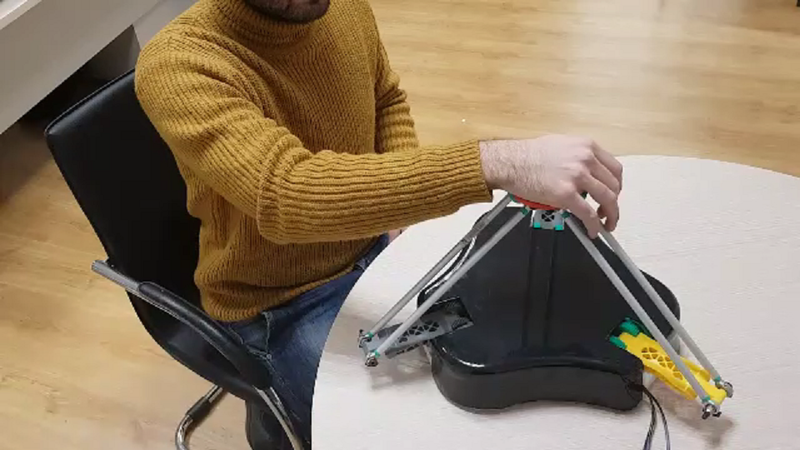ADIUTOR: A novel Limb Exercising and Monitoring Device
ADIUTOR device proposes a novel approach to provide high-intensity, repetitive, task-specific self-treatment at the home of an upper limb and it can help monitor patients' progress as well as personalize their treatment with improved motivation and interaction.
This article is a part of our University Technology Exposure Program. The program aims to recognize and reward innovation from engineering students and researchers across the globe.
Community voting is now live. Vote for your favorite submission by visiting: University Technology Exposure Program Community Vote.
Technical description
The robotic device ADIUTOR aims at improving the lives of both post-stroke patient and therapist users, who will be able to treat more patients with significantly lower time and cost than the currently existing solutions. The perfect integration with mobile devices will allow the patient to remain informed about her therapeutic progress, which is essential to keep the patient's motivation high. Reduced costs and footprints also allow use at the patient's home where sessions can be carried out at the comfort of their home, after the therapist has set up the training program. Human error will be minimized thanks to the efficiency that the machine offers, which will never be tired or bored, but will carry out therapy with constant results day by day. The physiotherapist will define the patterns that the1 patient will perform during the various sessions and monitor the progress of the results achieved. In the patient's use scenario, in accordance with the home use (where possible), it will be up to the physiotherapist to take care of all the necessary instructions and warnings to keep the patient in total safety during the conduct of the domestic therapy sessions.
ADIUTOR is composed of four main parts: the fixed base, the moving attachment, the moving elements, and the rigid cover. The fixed base can be located on a standard desk at home. A large touch screen is connected to the fixed base for the interactions with the users. The moving attachment (end-effector) of the device hosts the patient's hand. This part is also equipped with sensors to monitor the patient's biometric data (Heartbeats, Oxygen saturation, Relative humidity of the contact part). It is useful to understand the patient's state of effort/stress during the whole therapy. The moving elements are arranged in a robotic (DELTA-like) architecture. They allow three dimensional motions of the moving attachment. The moving elements include specific motors and control hardware. The rigid cover is located above all the moving elements to avoid any risks to the patient.
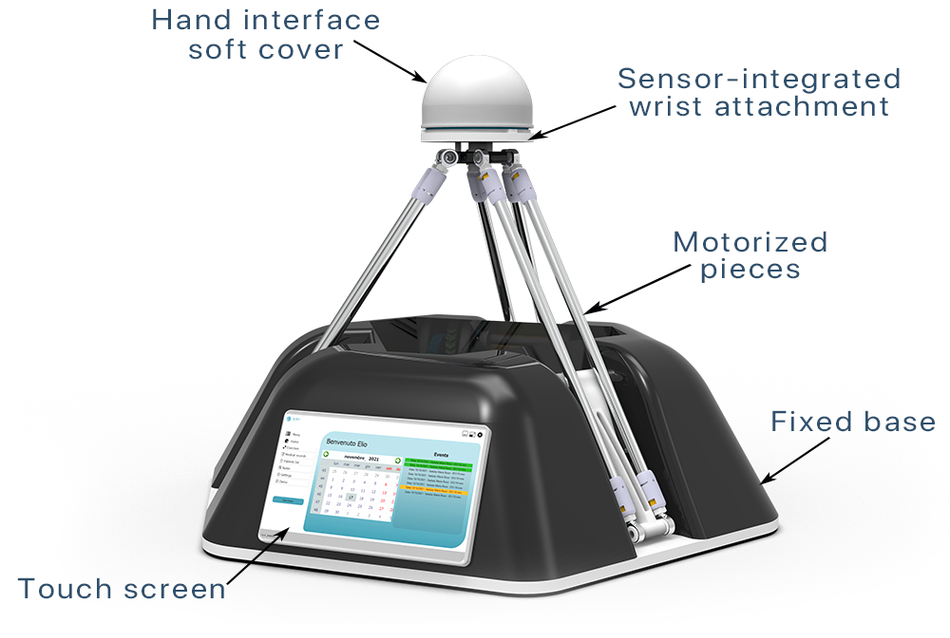
The Interactive Robotic Device is one of the most valuable innovative elements of this project. This technology is based on IT and the control algorithm is directly linked to the data collected by the Sensitive Haptic Interface. It is essentially a feedback control that can be implemented directly on the central control unit of the robotic device.
The interactive tasks aim to involve the patient in the rehabilitation activities; therefore "Serious games" are foreseen. This technique is already known and widely used in rehabilitation activities with robotic machines. The use of Virtual Reality technology would allow the patient to be immersed in the game environment to increase the perception of the three-dimensional movements to be performed. Table 1 reports a summary of ADIUTOR’s key features. This includes a touch screen user interface as also shown in Fig.2.
Key features of ADIUTOR:
Cost | Sizes [mm] | Ranges of motion [mm] | D.O.F. | Weight | Payload |
<25,000 Euros | 500x500x350 | 400x400x300 | 3 | < 10 Kg | 5 Kg |
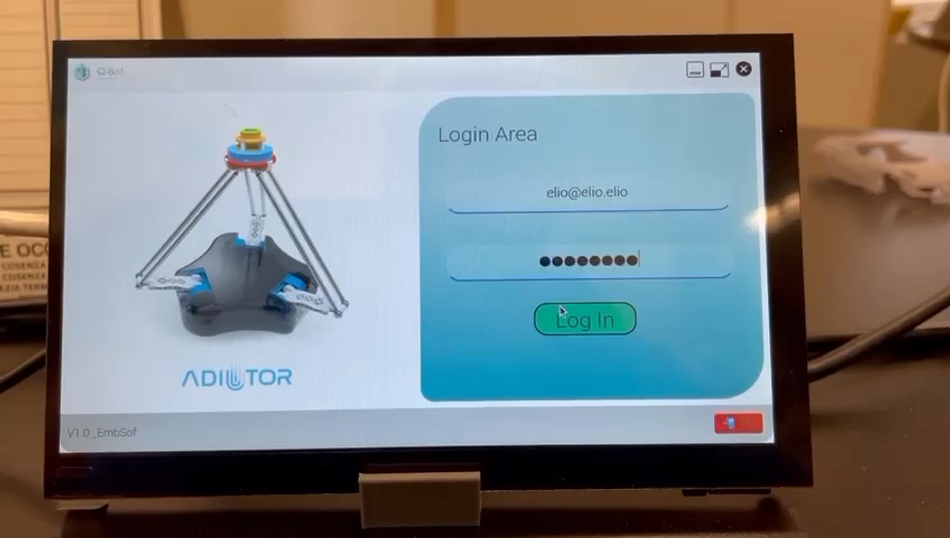
Applications of your prototype/product
Thanks to our device, patients could intensify their rehabilitation sessions, practicing several times in the clinic and at home, maintaining a high level of involvement thanks to serious games and artificial intelligence. These factors lead to a huge advantage which is the reduction of rehabilitation times with better results, such as greater coordination.
Furthermore, the machine can be used for different scenarios of rehabilitation: Acute rehabilitation: performed in hospitals following the stabilization of the patient after a stroke; Medium-term rehabilitation: performed in public and private rehabilitation clinics on an outpatient basis; Long-term rehabilitation: performed in rehabilitation clinics and in the home setting. Allows for prevention against premature aging; Treating chronic movement problems in the upper limbs; Track progress to keep motivation high. Fig.3 depicts some feasible operation scenarios for ADIUTOR while Figs.4 and 5 show some examples of the operation of a prototype.
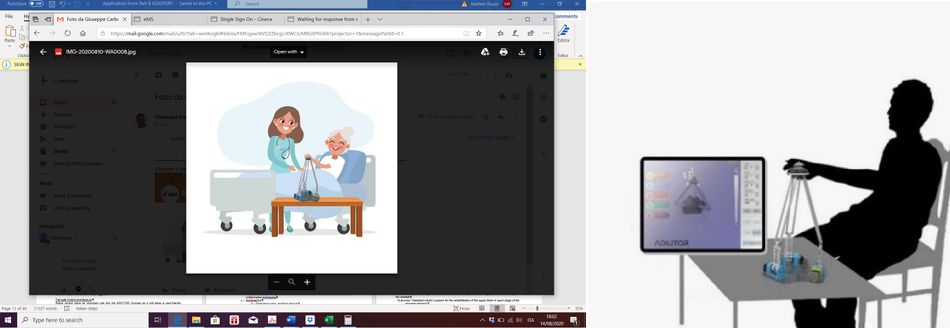
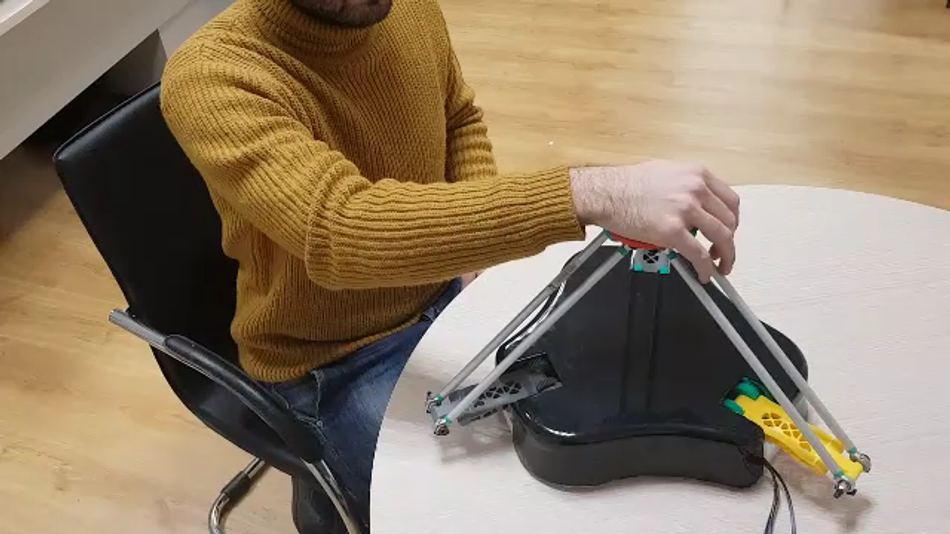

About the University Technology Exposure Program 2022
Wevolver, in partnership with Mouser Electronics and Ansys, is excited to announce the launch of the University Technology Exposure Program 2022. The program aims to recognize and reward innovation from engineering students and researchers across the globe. Learn more about the program here.

